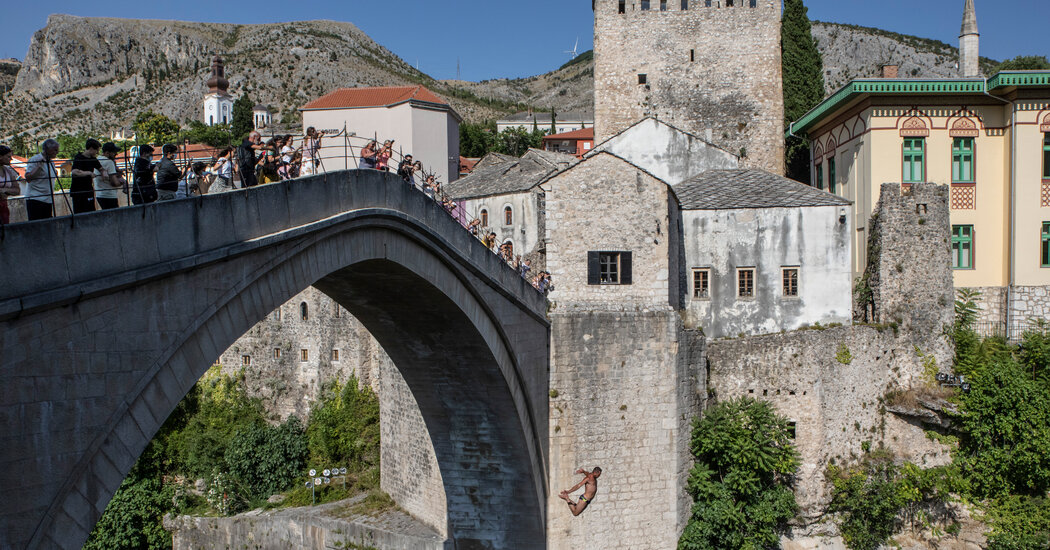Balancing on the slippery, shimmering stones of the breathtaking bridge, with the cold waters of the Neretva River glistening far below, Amir Hanic pokes his nose up and takes his last breath. Without looking up or down, only straight ahead, he leaps from the bridge, his hands and feet stiff like the outstretched wings of a swooping bird.
His descent lasts only a couple of seconds, but the audience surrounding him on the bridge has time to exclaim a collective “Ooh!” — a mixture of admiration and fright. Amir disappears beneath the surface, then, reappearing, quickly swims back to shore, as if nothing had happened. Within moments, he’s climbing back up to the bridge.
With his plunge in the southern Bosnian city of Mostar, Amir and his friends from the local diving club are honoring a tradition that goes back some 400 years — “to the Middle Ages, during the Ottoman era,” says Amir, wiping his face with a towel. “We are protecting our cultural heritage and keeping the passage over the bridge clean.”
“We are the guardians of the Mostar Bridge,” he adds.
The first recorded dive from the bridge in Mostar — known as the Old Bridge, or Stari Most — took place in the 17th century, around 100 years after its construction. Since 1968, the city has held an annual summer diving competition, which attracts participants from all over the world.
Braving the drop of around 75 feet (it varies with the height of the river), this extreme stunt requires a healthy dose of courage. But as Amir ascends from the river to the bridge, walking past the ancient stone stairs, the picturesque streets, the backdrop of musicians in the bazaar, he has another task. With a hat in his hand, he collects donations from the crowd of onlookers.
“I’m done with diving today,” he exclaims, still balancing on the edge of the bridge — but this time extending his arm toward the crowd. “Now I have to raise some money for our club.”
When I traveled to Bosnia with the photographer Alessio Mamo in July 2021, much of our trip took place in the shadow of the violence that tore through the region in the 1990s, when, as Yugoslavia broke apart, war erupted between three ethnonationalist groups: Orthodox Christian Serbs, Catholic Croats and Bosniaks, or Bosnian Muslims.
Our first destination was the Srebrenica-Potocari Memorial, where we met a young generation of Bosnians, Serbians, Kosovars, Montenegrins and Macedonians who commemorated the brutal killing of about 8,000…
Click Here to Read the Full Original Article at NYT > Travel…
